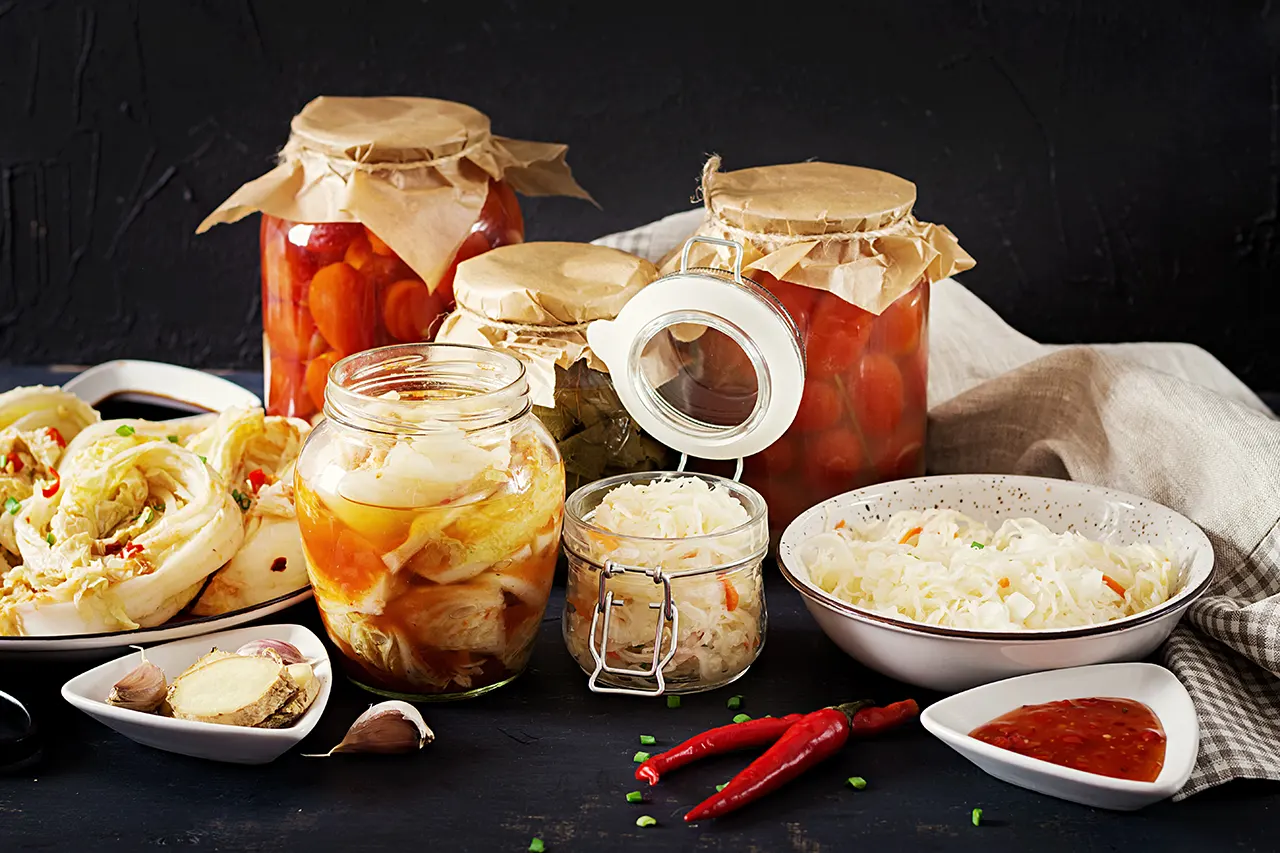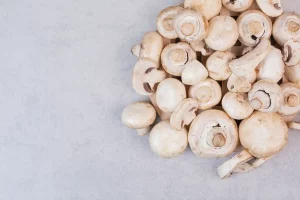- Fermented foods have become increasingly popular due to their ability to promote gut health.
- Fermentation improves the digestibility and assimilation of foods and reduces or eliminates lactose in fermented milk products.
- Nearly all foods can be fermented, including vegetables, fruits, grains, legumes, dairy products, fish, and meat. Lacto-fermentation is the most well-known and can easily be done at home with vegetables.
Are you looking for a simple way to improve your health? Look no further than fermented foods! In fact, this ancient method of food preservation is making a major comeback for its incredible health benefits. And the best part? It’s delicious too!
Fermented foods, such as sauerkraut, yogurt, sourdough bread, and pickles, have become increasingly popular due to their ability to promote gut health. Inside your gut lives a complex ecosystem of microbes, bacteria, and yeast called the “microbiota”. Research has shown that microbiota has a significant impact on our physical and even mental health. It aids in digestion, produces essential vitamins (B and K), supports a healthy intestinal barrier, and boosts the immune system.
Recent studies suggest that the microbiota may influence a variety of conditions such as intestinal diseases, obesity, and even neurological disorders like stress, depression, autism, and Alzheimer’s. Nurturing a healthy microbiota is a promising avenue for preventing and treating these conditions, which is why it’s important to feed it with the right foods, like fermented ones!
But What Exactly Are Fermented Foods?
Fermented foods are “living” foods that get better with age thanks to this preservation method. They undergo a transformation caused by natural or human-inoculated fermentation agents (like rennet, kefir, and sourdough starter) that create a “positive breakdown,” also known as refinement. As the pH of the food changes and becomes more acidic (around 4), it becomes more resistant to spoilage and unwanted bacteria, yeast, and fungi. Meanwhile, the food produces beneficial substances, such as probiotics.
What Are The Health Benefits Of Fermentation?
Fermentation has been used for thousands of years as a way to preserve food, and it has allowed people to survive during times of famine and epidemics. Beyond its undeniable ecological benefits, as it requires no energy, fermentation is the most economical way to conserve food and combat food waste. It is also an excellent way to improve the quality of natural foods and enhance their health benefits.
- Fermentation improves the digestibility and assimilation of foods. It’s like a predigestion, thanks to the enzymes produced during fermentation. For example, fermented vegetables have less irritating fibers for the intestines.
- It reduces or eliminates lactose in fermented milk products like yogurt and cheese, making them more tolerable.
- It allows for better assimilation of nutrients such as vitamins, and minerals (e.g. manganese, calcium, and potassium) without acidifying the body.
- It destroys harmful substances, such as phytic acid in whole grains (which inhibits the absorption of certain minerals such as iron and magnesium). Nitrates, pesticides, and mycotoxins are partially eliminated or broken down.
- It promotes the growth of “good” protective bacteria, such as probiotics.
- It increases vitamin levels (e.g. sauerkraut has more vitamin C than regular cabbage), the antioxidant potential, and the polyphenol content of foods.
- It alters the taste, smell, texture, and appearance of food, enhancing the refinement process.
Gerard Corthier, an INRA research director, considers fermented foods to be “one of the beneficial elements for the proper balance of the microbiota. But be careful, they are not ‘miracle’ foods, even though they promote better digestion!”
What Foods Can Be Fermented?
Nearly all foods can be fermented, including:
all vegetables (except for potatoes), such as sauerkraut, the most well-known are:
- fruits, in the form of wine or chutney (since their salty version is not appreciated)
- grains (sourdough bread)
- legumes (chickpeas, soy…)
- dairy products (yogurt, cheese…)
- fish, meat (sausage…)
Different Types Of Food Fermentation
There are several types of fermentation, including lacto-fermentation, also known as lactic acid fermentation (sauerkraut and other vegetables, yogurt, kefir, sourdough bread), alcoholic fermentation, acetic fermentation (vinegar), and alkaline fermentation (soy sauce).
Lacto-fermentation is the most well-known and can easily be done at home, particularly with vegetables, as it requires no additional ferment. All that’s needed is water, salt, and vegetables!
However, Gérard Corthier warns of the significant microbiological risks (colibacillosis, salmonella infections, etc.) involved in self-fermentation, especially with meat products (sausages, pâtés, etc.). “While not dangerous with vegetables,” he adds, “these risks can cause diarrhea.”
How Can You Make Fermented Foods?
Marie-Claire Frédéric, a fermentation expert and author of “Fermented Foods, Health Foods”, advises starting with vegetables because “it’s easy and safe. Lemons are also an option.” She, who has never had a failed fermentation, says that “at the beginning, the hardest part is not being afraid of microbes, which goes against everything we’ve learned because we want to sanitize everything.”
The process is straightforward: whole or finely sliced vegetables, salt, and water are placed in a tightly sealed jar. The mixture is then left at room temperature for a few days or several weeks to undergo fermentation before consumption.
“Once opened, the jar should be refrigerated to prevent a film from forming on the surface. It’s not dangerous, but it’s not pleasant to see or taste,” says Frédéric. And if the fermentation doesn’t occur? “You’ll know right away because there will be a foul smell that makes it unappetizing!”
Read More:
⇛ 6 Foods You Should Never Wash Before Eating & Cooking
⇛ 4 Mistakes We All Make When Defrosting Food
⇛ Why Food Blogs Are So Darn Successful?













